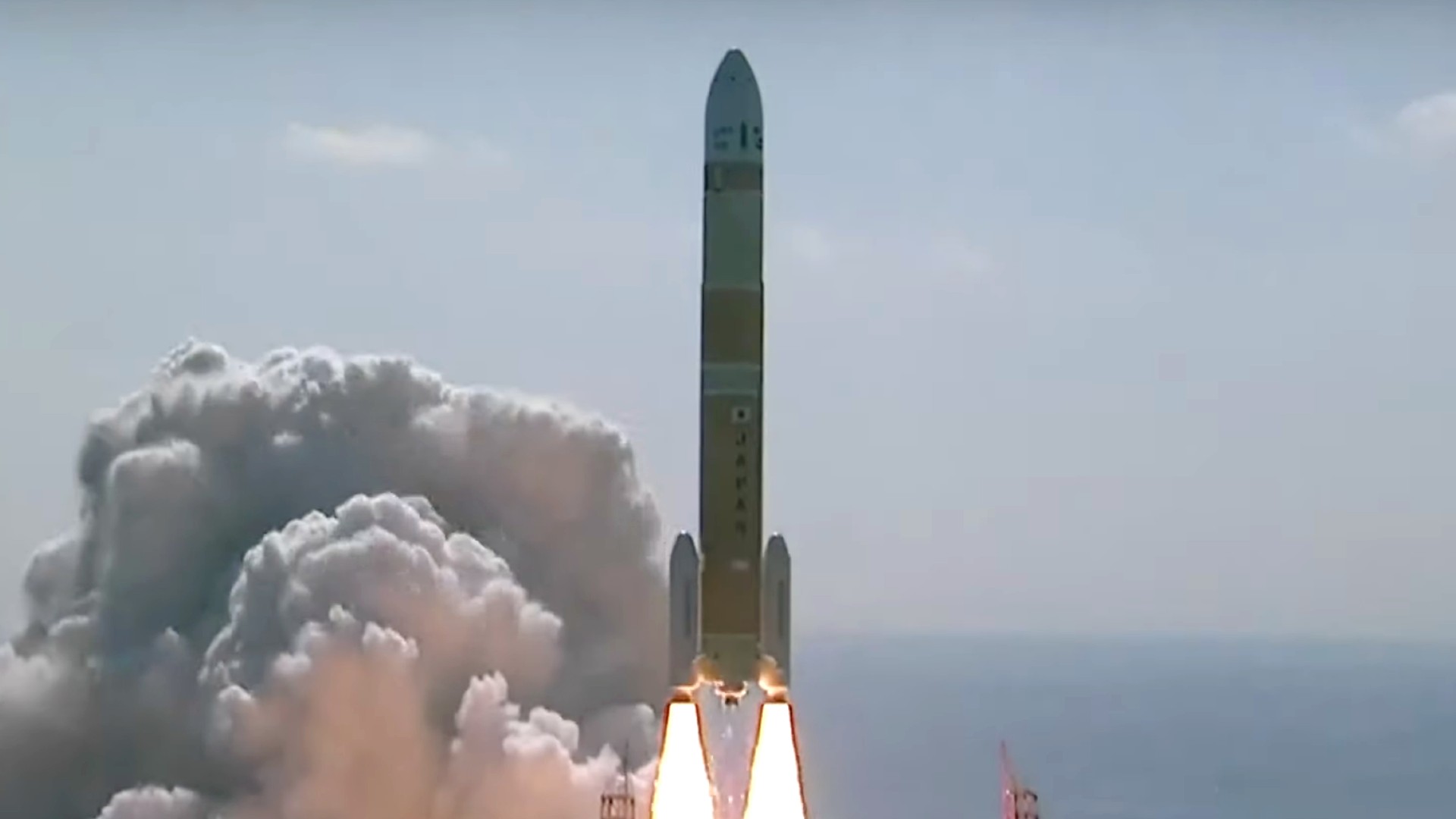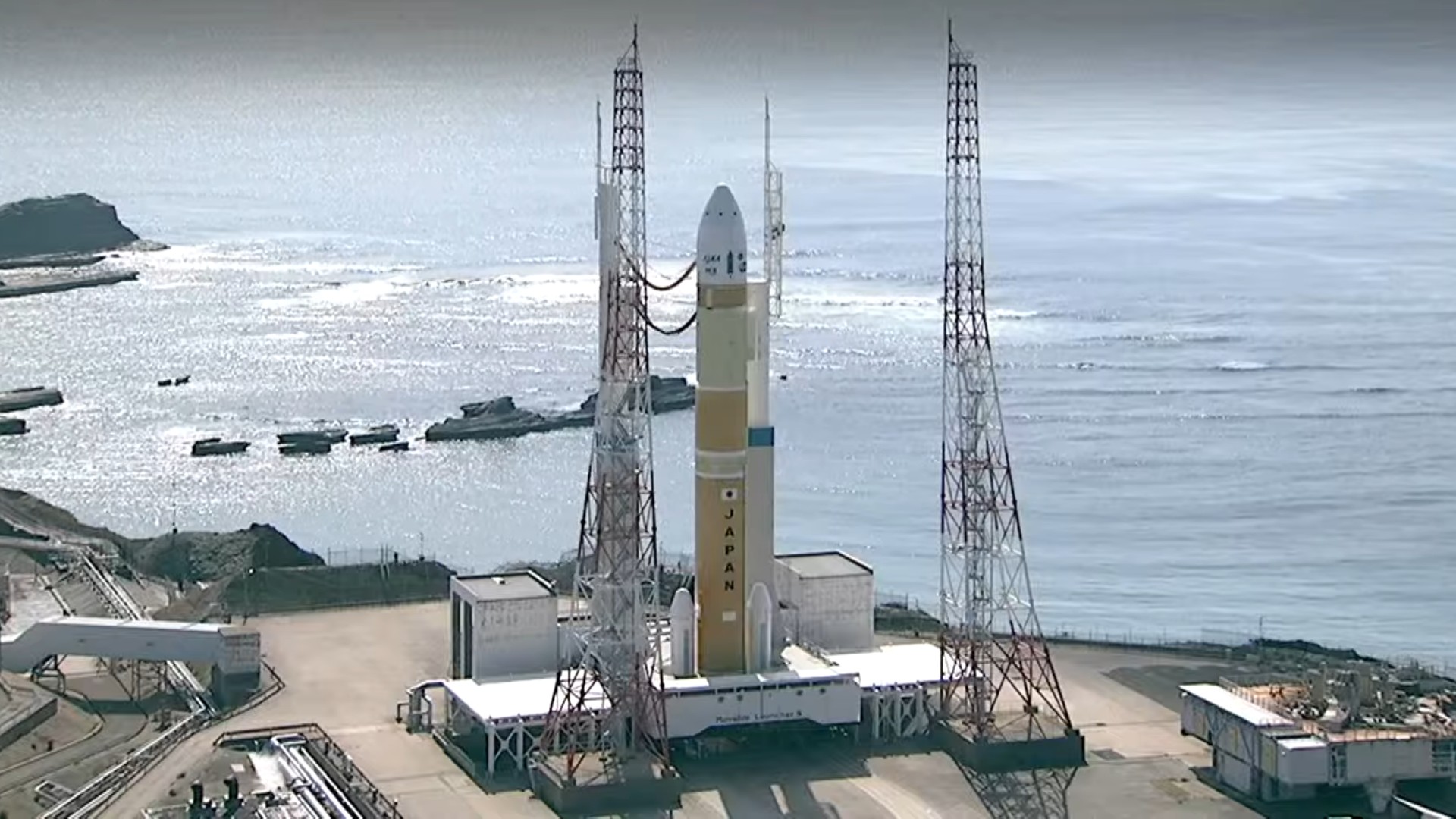Japan's new H3 rocket fails on 1st test flight, advanced Earth observation satellite lost
The second stage on JAXA's expendable H3 rocket failed to ignite.
Japan's brand-new rocket has failed its first test flight.
The Japan Aerospace Exploration Agency (JAXA)'s new H3 rocket lifted off from Tanegashima Space Center on Monday (March 6) at 8:37 p.m. EST (0137 GMT and 10:37 a.m. Japan Standard Time on March 7). 5 minutes and 27 seconds after liftoff, a command was sent to the rocket for stage separation and second stage ignition. Just after seven minutes into the flight, launch commentators on JAXA's livestream on YouTube noted that the rocket's velocity was falling and that second stage ignition could not be confirmed.
Mission controllers shortly thereafter issued a destruct command to the rocket, bringing its first test flight to an early end. "A destruct command has been transmitted to the launch vehicle, because there was no possibility of achieving the mission," read a subtitle on JAXA's livestream.
Monday's liftoff was the H3's second try at a debut launch. The H3 aborted its first attempt on Feb. 16, a result that JAXA eventually traced to an issue with the electrical system that supplies power to the rocket's first-stage LE-9 engines.
Related: The history of rockets
Aboard the rocket when the destruct command was issued was the Advanced Land Observing Satellite-3 (ALOS-3), also known as DAICHI-3, heading for a sun-synchronous orbit 416 miles (669 km) above Earth. It was designed to deliver high-resolution images of Japan and other areas in strips 43 miles (70 kilometers) wide with a resolution as sharp as 2.6 feet (0.8 meters).
The failed launch comes after a decade of development carried out jointly by JAXA and Mitsubishi Heavy Industries. Issues getting the rocket's powerful LE-9 liquid hydrogen-liquid oxygen engines ready resulted in significant delays to the first launch.
Breaking space news, the latest updates on rocket launches, skywatching events and more!
The H3 stands 187 feet or 207 feet tall (57 or 63 m), depending on the length of two possible payload fairings that can be used for each mission. The rocket is capable of delivering "4 tons or more" to a 310-mile-high (500 km) sun-synchronous orbit and "6.5 tons or more" to geostationary transfer orbit, according to JAXA's specifications page.
The version that failed on Monday (H3-22) carried two solid propellant side boosters, but the rocket can be bundled with four such boosters to increase its carrying capacity. Monday's test flight also only used a pair of LE-9 engines, while more capable variants of the rocket employ three LE-9s.
The new launcher will replace the H-IIA rocket, Japan's current workhorse launch vehicle, which is expected to have its final flight in 2024.
The expendable H3 is designed for high flexibility, high reliability and with a better cost performance than the H-IIA, according to JAXA. It faces challenges in the international launch market, however, after the emergence of SpaceX's reusable Falcon 9, which has proven itself to be highly reliable and cost-effective.
Despite this, recent developments elsewhere have created opportunities for the H3, according to Marco Aliberti, associate senior fellow at the European Space Policy Institute (ESPI) in Vienna.
"The cutting off of Russian rockets from this market, combined with the absence of a competing European offering, open some new possibilities for Japan's launchers, which were historically absent from the commercial market," said Aliberti.
Yui Nakama, a visiting researcher at ESPI from the University of Tokyo, noted that the Japanese government decided to significantly expand domestic rocket launch facilities in May 2022 in order to address the global shortage of launch capacity in the wake of Russia's invasion of Ukraine.
The H3 will need to prove itself to be reliable once it takes off, however, and will need support in the form of the Japanese government booking the launcher for missions. One source of missions will be Japan's security needs.
"The stable operation of H3 will make a significant contribution to Japan's security," said Nakama. "One of the H3's primary goals is to maintain autonomy, aiming to operate its own core launch vehicle that meets the government's mission of primarily national security."
"This is critical in light of China's growing influence in the Indo-Pacific region, where space defense has emerged as a key agenda."
Looking further ahead, the H3 could potentially play an important role in Japan's aspiration for crewed launch capacities, Aliberti said.
Follow us on Twitter @Spacedotcom or Facebook.

Andrew is a freelance space journalist with a focus on reporting on China's rapidly growing space sector. He began writing for Space.com in 2019 and writes for SpaceNews, IEEE Spectrum, National Geographic, Sky & Telescope, New Scientist and others. Andrew first caught the space bug when, as a youngster, he saw Voyager images of other worlds in our solar system for the first time. Away from space, Andrew enjoys trail running in the forests of Finland. You can follow him on Twitter @AJ_FI.


